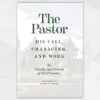Book Review: Talking to Catholics about the Gospel, by Chris Castaldo
Chris Castaldo, Talking to Catholics about the Gospel: A Guide for Evangelicals. Grand Rapids, MI: Zondervan, 2015, pp. 192.
Wherever you live in the world, be it Buenos Aires, Manila or Philadelphia, you are likely to have Roman Catholic neighbors, colleagues, or friends. With its 1.2 billion people, Roman Catholics are the largest religious grouping around the globe. So if you want to share your faith in Jesus Christ with a Catholic, Talking to Catholics about the Gospel: A Guide for Evangelicals offers guidelines and encouragement on how to approach a conversation or a relationship with a Roman Catholic friend. The author, Chris Castaldo, is a pastor-theologian with an evangelist’s heart, and he is one the best guides in today’s evangelical church on the subject of evangelizing Catholics. He proves that with this book.
“EVANGELICAL CATHOLICS”?
After defining what he means by “evangelical,” Castaldo goes on by helping the reader to come to terms with the different sub-categories of Catholics that one may encounter. He explains that there are “traditional Catholics,” “evangelical Catholics,” and “cultural Catholics.” Each category has its own particular way of living out the Roman Catholic identity and each one brings specific challenges and opportunities in terms of gospel witness.
I guess that this typology needs to be refined according to the context one finds himself in. In my corner of the world (Rome, Italy), I find some “traditional Catholics” and tons of “cultural Catholics,” but I also meet with many people whose Catholicism is largely characterized by folk-religion practices like devotions to the saints and the cult of the dead. I am not sure which of the three categories they fit in or if they need another category on their own, like “folk Catholics.”
How one formulates a question shapes one’s answer in a profound way. I also have to say that I find it difficult to accept the “evangelical Catholics” category. For me it is an oxymoron. Castaldo rightly defines evangelicalism in theological terms by referring to the 1974 Lausanne Covenant as a representative evangelical document. Lausanne highlights the authority of Scripture, the uniqueness of Jesus Christ, salvation by grace alone through faith alone, the need for conversion, the commitment to evangelism and mission. If this is the meaning of evangelical (and I fully agree with it), then this “evangelical catholic” category falls apart. According to this meaning of evangelical you are either an evangelical or a Roman Catholic. You cannot be both.
If the word “evangelical” is instead understood in sociological terms as being a qualifier of a spirituality marked by passion and commitment, then you move away from its more doctrinal definition. This is the meaning given by George Weigel, the author of the book Evangelical Catholicism to which Castaldo refers.[1] Weigel wants us to believe that evangelical has no theological substance, but only denotes a spiritual fervor that can be applied to a committed Catholic as well. Weigel’s champions of an “evangelical Catholic” are Paul VI and John Paul II, whose theological commitments were far away from the theologically understood evangelical core. So instead of blurring the meaning of “evangelical” and passively accept Weigel’s rebranding of the term, I suggest that “passionate Catholics” is a better description of this category of people, i.e. people who seem to have commitments similar to an evangelical but adhere to the traditional outlook of Roman Catholicism.
HOW TO EVANGELIZE ROMAN CATHOLICS
Castaldo also provides a helpful taxonomy of evangelical approaches towards Roman Catholics. They range from “actively anti-Catholic” to “passively anti-Catholic”; from “co-existent” to “positive identity”; from “symbiotic” to “ecumenical” and “internal renewal.” Each approach is based on certain evaluations of Roman Catholicism. The reader will find it a helpful exercise in placing himself in one these categories in order to be aware of his spiritual motifs, theological convictions, and personal experiences.
After clarifying the terms, the book devotes one long chapter on the modern history of Roman Catholicism, thus showing the historical complexity that lead to the present-day Roman Catholicism. This section is very informative and helpful in giving some historical context to the evangelistic task.
THE FUNDAMENTAL CONTRAST
Another important chapter is devoted to clarifying the theological issues at stake by way of expounding “similarities and differences” between evangelicals and Catholics. There are multiple doctrinal divergences, but the ultimate point of difference, says Castaldo, lies in the contrasting view of the incarnation of Christ as it is related to the nature and mission of the Church. Here he quotes Joseph Ratzinger, Pope emeritus Benedict XVI: “The notion of the body of Christ was developed in the Catholic Church to the effect that the Church designated as ‘Christ living on earth’ came to mean that the Church was described as the Incarnation of the Son continuing until the end of time” (87). Understood in this way, the church assumes the prerogatives of Christ in his roles as prophet, priest, and king. His prophetic role becomes the magisterial office of the church. His priestly role becomes the sacramental structure of the church. And his kingly role becomes the political authority of the Roman church.
From this fundamental difference, other divergences emerge in relation to authority, salvation, the perpetual sacrifice of the Mass, purgatory, indulgences, veneration of the Saints, penance, and the mediating role of Mary (83). The difference between evangelicals and Roman Catholics can be found with different intensities and at various levels, but given the fundamental nature of the division it can be traced in all areas of faith and practice while recognizing certain convergences of language and thought-forms, especially in the Trinitarian framework of the Christian faith. It seems to me that the premises of the chapter lead to this conclusion.
TOWARD MEANINGFUL CONVERSATIONS
Behind history and doctrines, however, are real people with their stories and beliefs, and this is something that is often overlooked in evangelism. Castaldo’s aim is to encourage all true disciples of Jesus Christ to be actively involved in personal witness of the gospel and to do it in ways that embody the good news. With his characteristic personal warmth and theological acuteness, Chris Castaldo is educating us evangelicals to engage in meaningful conversations with our Catholic friends and neighbors.
At the beginning of the book, he suggests that any evangelistic effort toward Catholics should occur under the biblical rubric of “grace and truth.” The final chapter persuasively argues that if evangelism is not done in grace and truth it becomes something that does not honor God nor advances the cause of the gospel.
To that end, Talking to Catholics about the Gospel well manages to strike the balance between biblical clarity and Christian love. My hope is that it will set the tone for present and future engagements by evangelicals to their Catholic friends.
*****
[1] In private correspondence, Castaldo has made a distinction between “evangelical catholicism” as Weigel understands it and “evangelical catholics” as individual people holding on seemingly evangelical convictions while remaining catholic. Unfortunately, this distinction doesn’t make it into the book.







